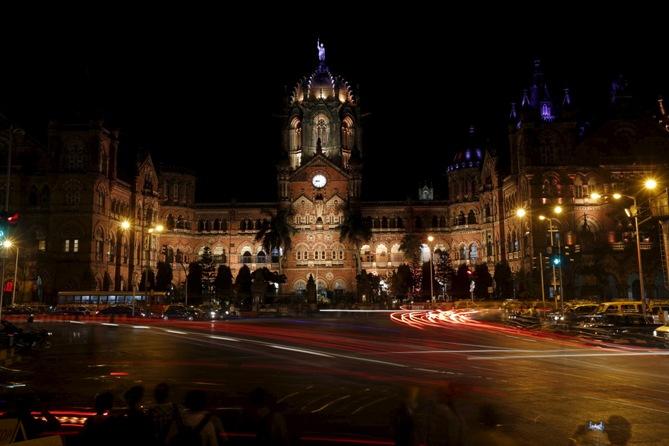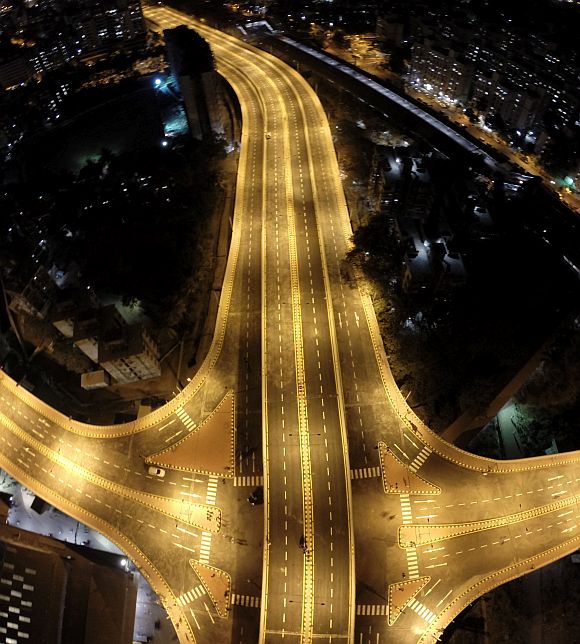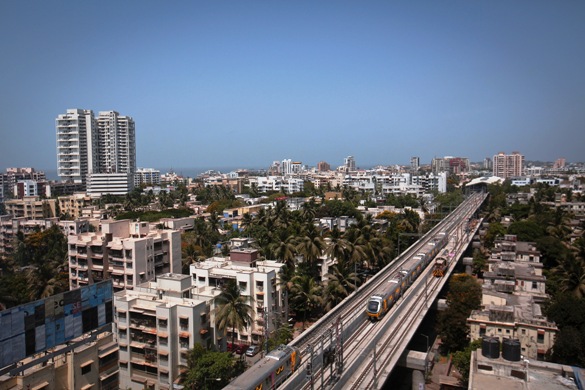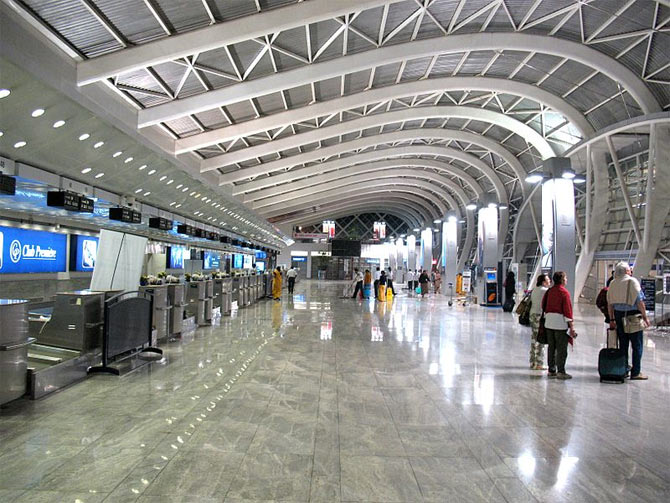 | « Back to article | Print this article |
Big developers are learnt to have made a pitch to get a role in the project that is spread over 16 acres behind Mumbai's popular Crawford market.

A young woman drove away on a motorcycle while cycle rickshaws and pedestrians made way for each other on the congested road lined with shops selling anything from sweets to electronic gadgets and poorly ventilated residential units.
Ramzan is making Bhendi Bazaar, a shopping destination for antiques and hardware in South Mumbai, more crowded than usual.
But the road leading up to Raudat Tahera, the mausoleum of Syedna Taher Saifuddin and his son and successor Syedna Mohammad Buhranuddin, religious leaders of the Dawoodi Bohra Ismaili Muslims, is now getting attention not just from local bargain hunters but from industry, policy makers and even educationists.
More so, after Bhendi Bazaar was recently named by the National Democratic Alliance government as a prototype for its smart city and urban rejuvenation project, and the model was showcased at Prime Minister Narendra Modi's inauguration event in the last week of June.

The prototype, drawing an estimated investment of Rs 4,000 crore (Rs 40 billion), might turn out to be a ground for real estate as well as retail play.
Big developers are learnt to have made a pitch to get a role in the project that is spread over 16 acres behind Mumbai's popular Crawford market.
Tales from the past suggest that natives had many decades ago interpreted reference to 'behind the (Crawford) bazaar' as 'Bhendi Bazaar', which now is aspiring to be the longest high-street retail in Mumbai, giving competition to the popular shopping hub -- Linking Road.
While the biggest challenge is to give alternate home and business space to the people who are being dislocated because of the project, a representative of the Saifee Burhani Upliftment Trust, a community-led organisation giving a makeover to Bhendi Bazaar, said 1,700 households out of a total of 3,200 have already been shifted to transit homes.
The plush multi-storeyed building that houses the SBUT office with several shops and residential units, which are serving as transit homes and place of business for several hundreds dislocated from Bhendi Bazaar, is an example of how the project is going.

SBUT representatives admit that regulatory clearances have taken years and some are yet to come. But with the PM showing personal interest, things could move faster from now on, they hope.
The funds required for the project is being raised internally from the community, both within and outside the country, it is learnt.
A sum of Rs 4,000 crore (Rs 40 bullion)is a substantial amount, even when one was to compare with Rs 100 crore a year central fund per city sanctioned by the Union Cabinet for the 100 smart city project.
But funds are not an issue in this pilot project, claim people handling it.
Still, four out of the 17 towers that are expected to come up in the rejuvenation plan would be kept for sale.
The modalities are yet to be determined, but the sale of those towers would make the project feasible, SBUT representatives said.

The other 13 towers, a combination of residential and commercial, are meant to give a better living to the people of Bhendi Bazaar, a business community representing various economic strata.
Pratap Padode, founder and director of Smart Cities Council (India), said the two biggest advantages with Bhendi Bazaar rejuvenation plan were that the area was densely populated with proximity to a popular market and that the scheme was about community living.
Pointing out that SBUT was exploring the option of a joint development of Bhendi Bazaar with a private developer, Sanjay Dutt, executive managing director (South Asia) at Cushman & Wakefield, said if this pilot works, it will be a great example of what can be done for urban rejuvenation. He stressed on the need for recovery of the investment made in such deals.
As of now, screening of real estate players is on to determine which developers will get the mandate for construction of the 17 towers along with other infrastructure.

Both national as well as local realtors have shown interest.
Meanwhile, deals are still being struck with landowners to buy out buildings. The prototype is also being pursued as a case study in many foreign colleges and universities.
Among others, teams from Columbia University and London University had come down to study best practices in urban development.
At the same time, SBUT has drawn international inspiration from Barcelona, Amsterdam and even China.
Partnerships are also in place with close to 20 consultants and contractors, with some prominent names, including Mandviwala Qutub & Associates, Perkins Eastman, KPMG, Deloitte, Knight Frank and Noor Enterprises.
Mayors of other Indian cities aspiring to get smart are believed to be in conversation with the trust too.
It could take at least five years to come up.
And if things go as per plan, Bhendi Bazaar by 2020 may look quite something else, complete with Fatimid architecture popular in Egypt for natural ventilation, wide roads, and much else.